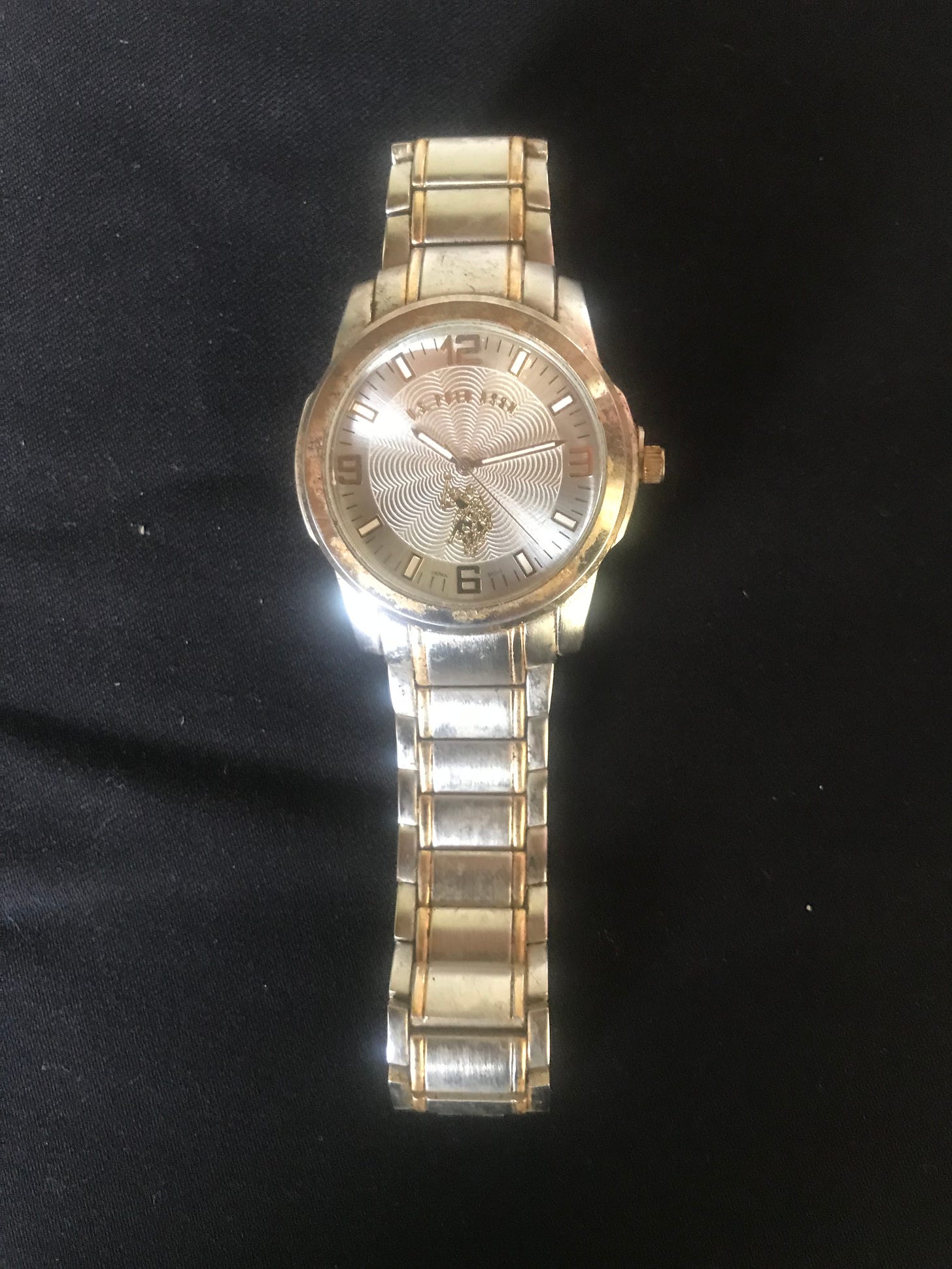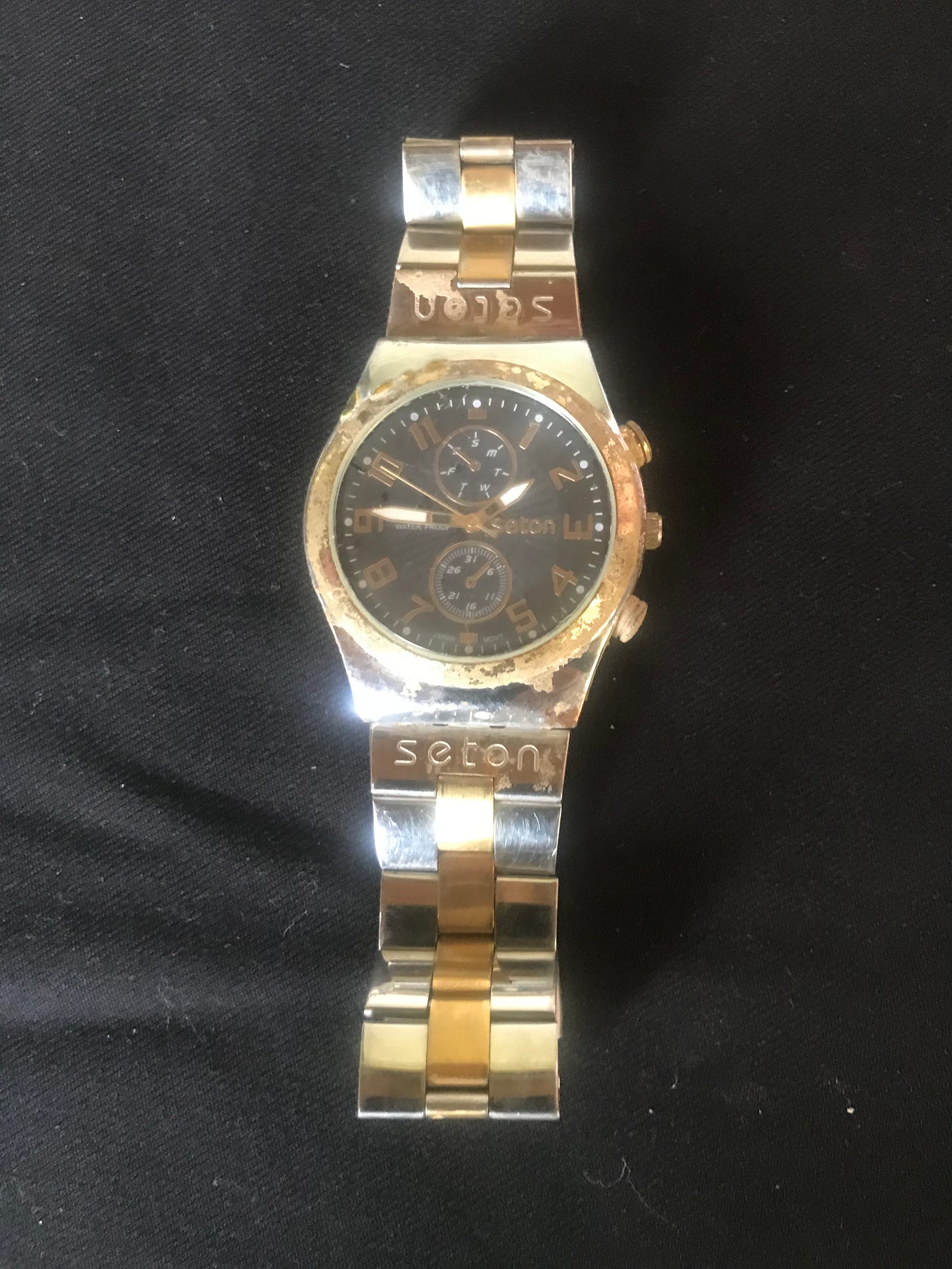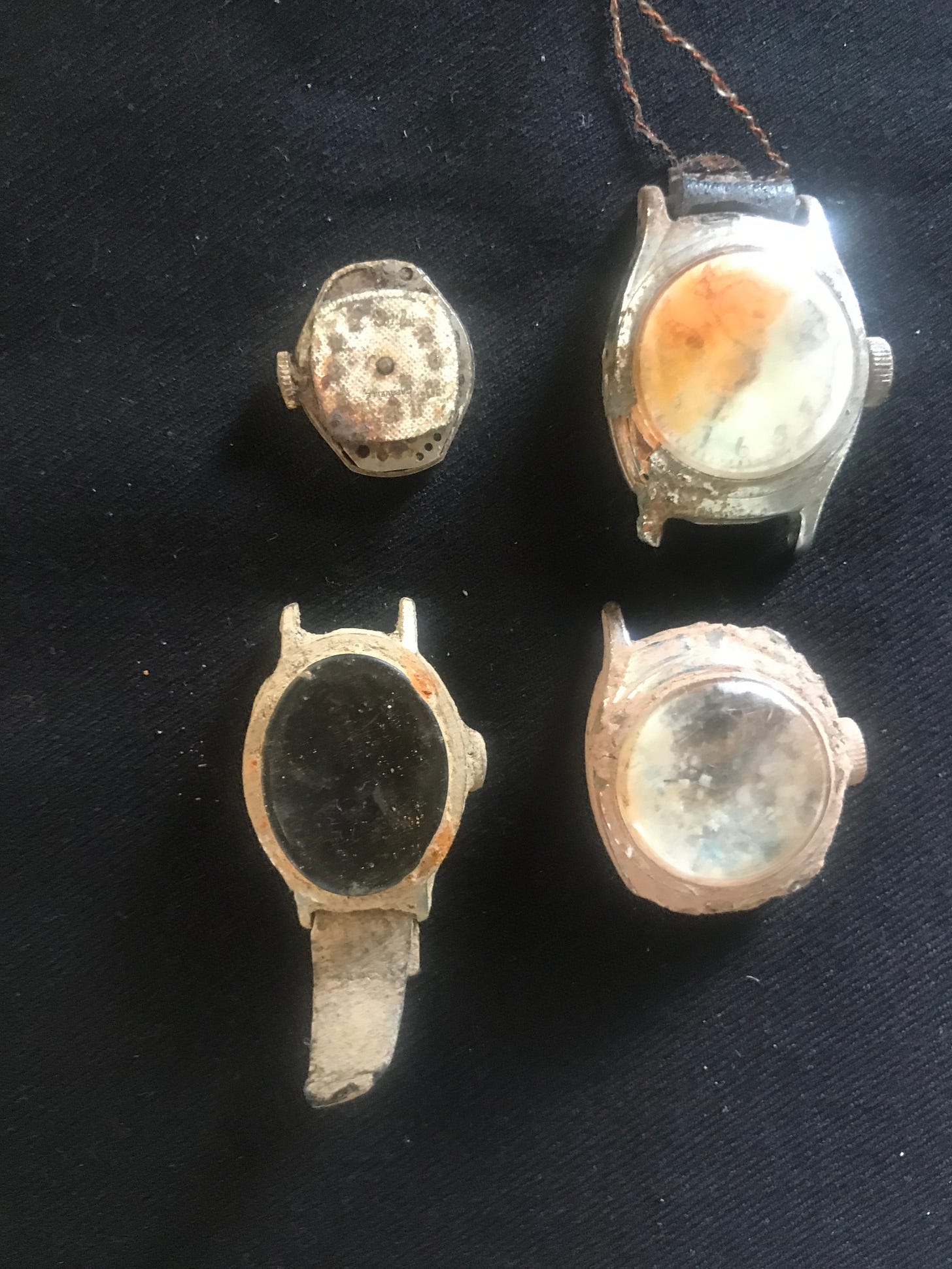Does Anybody Really Know What Time It Is?
And does anybody really care? (Chicago Transit Authority, 1970)
My post from September 21, 2023, featured my pocket watch collection—though I’ve since added a few more pieces. Today’s post is about my wristwatch finds.
The first known design for a wristwatch dates back to 1810, but they didn’t become widely popular until the early 20th century. I don’t have nearly as many wristwatches as I do pocket watches—probably because they’re harder to lose!
First up is a U.S. Polo Association watch made by Accutime Watch Corp. These retail for about $25 and aren’t particularly old. Accutime, founded in New York City in 1967, has grown into a major designer of fashion and branded watches. They produce signature timepieces for brands like Disney, Marvel, Warner Brothers, and Star Wars, as well as the U.S. Polo Association example shown here.
Next is a Seton watch. My research shows the brand is based in Newcastle upon Tyne, England. Their website currently lists only two models, neither of which matches this one, but the watches sell for around £75, or roughly $100.
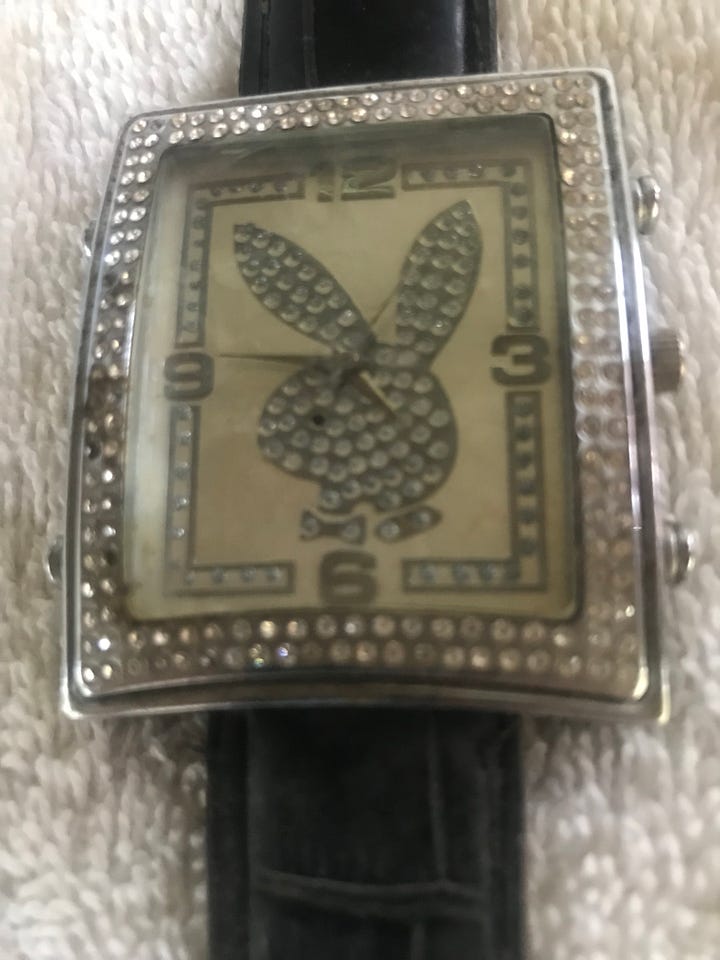
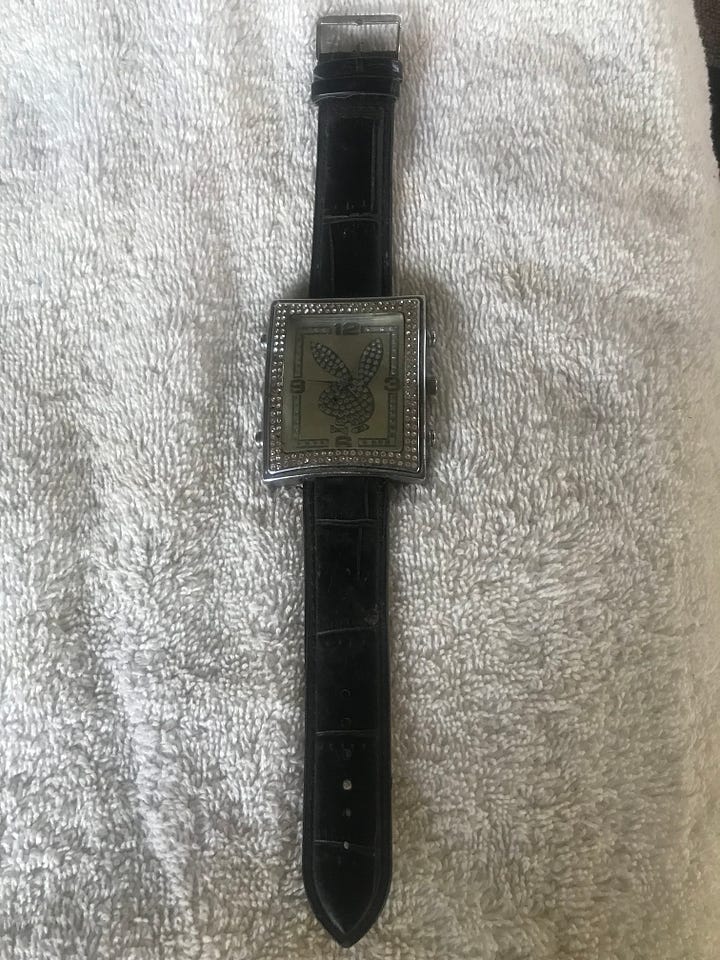
Third is a Playboy diamond-encrusted wristwatch worth an estimated $50,000. Bazinga! Just kidding (or am I?). I couldn’t find this exact model online, but others range from $20 to $400. I’m not overly familiar with Playboy—I believe it was a highly educational magazine published monthly from the mid-20th to early 21st centuries.
Fourth is a small collection of ladies’ watches: a U.S. Time, a more modern Timex (we all know that name), a Caravelle, and one of unknown make.
The U.S. Time brand actually has a fascinating history. It began as the Waterbury Clock Company in Connecticut in 1854 and later became the United States Time Corporation during World War II, when it was making timing devices for the military. The company rebranded as Timex in 1969, and the rest is wristwatch history. So, any watch marked “U.S. Time” comes from that transitional era when the company was shifting from its wartime roots into one of America’s most recognized consumer watch brands.
The Caravelle, on the other hand, was introduced by the Bulova Watch Company in 1962 as an affordable but fashionable alternative to their more premium lines. At the time, Caravelle watches sold for about $10 to $30 and quickly became some of the best-selling jeweled watches in America. The brand is still around today under the name Caravelle by Bulova, with styles ranging from classic to contemporary. Some vintage Caravelles even borrowed movements from small Swiss manufacturers, making them surprisingly well-built for their price range.
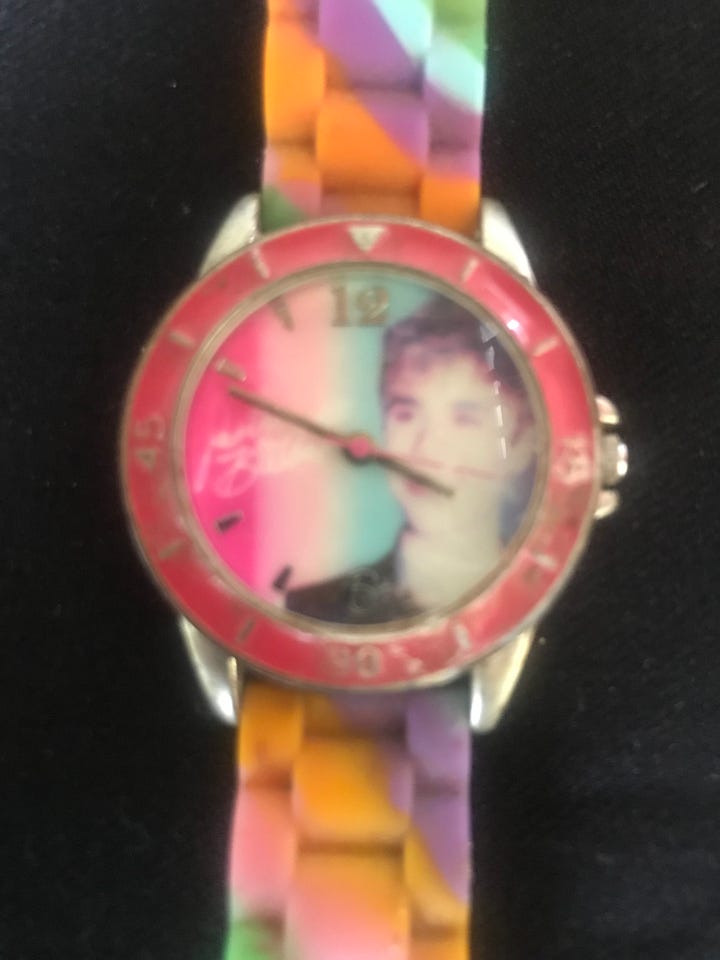
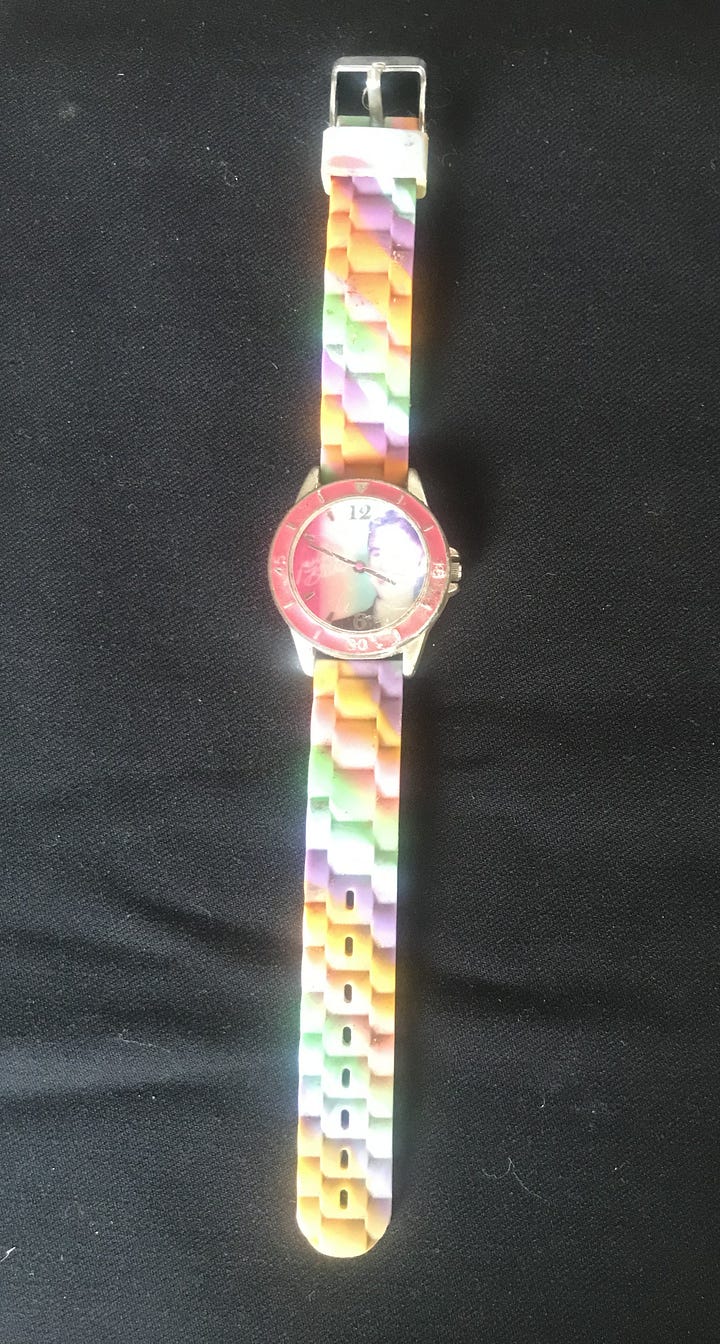
And finally, if anyone reading this post happens to run into Mr. Bieber, please let him know I found his watch. For a small finder’s fee, I’ll make sure it gets back to him!


